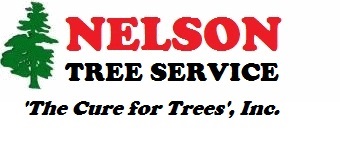People top trees for many reasons, all of them connected to falsehoods and misconceptions.
Myth: Topping a tree will reduce storm damage and make the tree easier to maintain.
Truth: Topping Increases storm damage potential.
Reasons:
- Resprouting is quick. Topped trees regain thier original height within 2 to 4 years. Many trees wind up taller than if they had not been topped.
- Resprouts are weak. A topped tree’s new limbs, because of their rapid growth rate and lack of strong attachment to the tree, will break easier.
- Resprouts are weakly attached. As the branch gains weight the weak attachment becomes more vulnerable to breaking. Topped trees often have breakage at the new limbs.
- Dieback is a tem for entire limbs dying. This can create a hazardous storm situation.
- Resprouting is very dense, expecially in the first years after topping, making the tree less resistant to wind than had it been normally.
- Root Death occurs because less food is being made in the leaves area and stored in the roots. This can leave an entire tree with fewer anchoring roots and, therefore, more likely to blow over during a storm.
- Loss of side limbs, due to topping, drastically reduces the “cushion” that normal trees have when they fall, dramatically increasing the chance of property damage.
- Liability concerns increase for both property owner and tree topper if resulting trees casue bodily harm or damage property.
Myth: Topping invigorates a tree.
Truth: Topping immediately injures a tree and starts it on a downward spiral.
- Decay starts when a tree is topped. Even strongly angled cuts never close completely.
- Sunscald, the effect of prolonged bright sun heating a tree’s trunk after it has been topped, kills tissue just below the bark directly or when freezing temperatures follow, causing that portion of the trunk to die.
- Food production loss from the absence of its crown greatly alters a tree’s ability to channel nourishment to the woody parts- the stem and root system.
- Excess resprouting occurs as the result of loss of branches, the tree forming very thick and ugly sprouting almost overnight.
- Disease and insect attack follows on the heels of resprouting, sunscald and food production loss as a tree’s physiological system is altered and disease resistance lowered.
- Root weakening and decay result from the loss of food resources once produced in the part of the crown that was removed.
- Shortened life span or death of a tree is the eventual result of topping. Some trees will not tolerate topping and may quickly die. All other survivors will have reduced life spans.
Truth: Topped trees lack natural beauty and may reduce your property values. Also, a topped tree can become hazardous and cause property damage, making it a liability.
Information taken from brochure “Don’t Top Your Tree” from the ISA. For more info visitwww.isa-arbor.com


